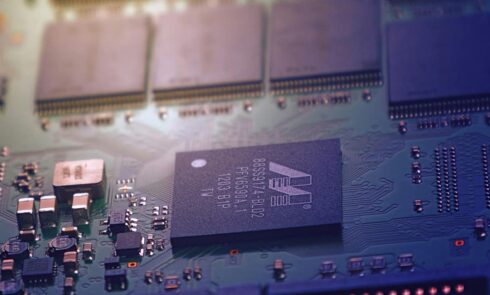Nanotechnology, the manipulation of matter at the atomic or molecular scale, is driving one of the most significant revolutions in electronics today. As the demand for smaller, faster, and more efficient electronic devices continues to grow, nanotechnology is playing a critical role in enabling breakthroughs that are reshaping the future of electronics. From improving the performance of semiconductors to creating entirely new types of materials, nanotechnology is pushing the boundaries of what’s possible in electronic design and manufacturing.
In this article, we explore how nanotechnology is revolutionizing electronics, its applications in miniaturization, and the potential implications for industries ranging from consumer electronics to healthcare and beyond.
The Role of Nanotechnology in Electronics
Nanotechnology involves the manipulation of materials at the nanometer scale (typically between 1 and 100 nanometers). At this size, materials exhibit unique properties that differ significantly from those at larger scales. These properties arise from quantum mechanics and the increased surface area-to-volume ratio, which often leads to enhanced strength, conductivity, and chemical reactivity.
In electronics, nanotechnology is used in various ways to improve performance, reduce size, and enable new capabilities. Key areas where nanotechnology is having a major impact include:
- Semiconductor Manufacturing and Moore’s Law: As the semiconductor industry approaches the limits of traditional lithography techniques for shrinking transistor sizes, nanotechnology offers new methods for continuing Moore’s Law, the observation that the number of transistors on a chip doubles approximately every two years. Advanced nanofabrication techniques, such as extreme ultraviolet (EUV) lithography and nanowire transistors, allow for the creation of smaller, more densely packed transistors, which lead to more powerful and energy-efficient chips. These innovations enable the continued miniaturization of microprocessors, driving the development of faster and more capable devices.
- Nanoelectronics: Nanoelectronics involves the integration of nanomaterials into electronic components to enhance their performance. Nanomaterials, such as carbon nanotubes and graphene, are used to create transistors that are faster, more efficient, and smaller than traditional silicon-based devices. Graphene, in particular, is praised for its exceptional electrical conductivity, mechanical strength, and flexibility, making it a promising material for the next generation of high-performance electronics.
- Flexible and Wearable Electronics: One of the most exciting applications of nanotechnology in electronics is the development of flexible, lightweight, and stretchable devices. By using nanomaterials, such as organic semiconductors and nanowires, engineers can create electronics that bend, stretch, and even fold without losing functionality. This is opening up new possibilities for wearable technology, such as smartwatches, health-monitoring devices, and flexible displays, which can be integrated into clothing or accessories.
- Nano-optics and Photonics: Nanotechnology is also making waves in the field of optics and photonics, where tiny structures are used to manipulate light at the nanoscale. By incorporating nanostructures into optical components, such as lenses and sensors, it’s possible to improve performance, reduce size, and enable new functionalities. Nanophotonics, which deals with the interaction between light and nanomaterials, is already being used in applications like high-speed data transmission, optical computing, and advanced imaging systems.
Applications of Nanotechnology in Miniaturization
Nanotechnology has been a driving force behind the miniaturization of electronic devices, making it possible to create smaller, faster, and more powerful products. Here are a few key applications where nanotechnology has enabled significant progress in miniaturization:
- Smaller and More Powerful Chips: As electronic devices become increasingly smaller, the need for more compact, powerful chips becomes paramount. Nanotechnology allows for the development of smaller transistors, which in turn allows for the creation of chips with more transistors in a smaller area. This has led to the development of faster processors for everything from smartphones to high-performance computers.
- Memory Storage Devices: In the realm of data storage, nanotechnology is enabling the development of smaller, more efficient memory devices. For example, resistive random access memory (ReRAM) and phase-change memory (PCM) are emerging as alternatives to traditional flash memory. These technologies rely on the ability to control electrical states at the nanoscale, providing higher storage density and faster read/write speeds, while reducing power consumption.
- Nano-enabled Sensors: Nanotechnology is also revolutionizing the field of sensors. Nanosensors are tiny devices that can detect a wide range of environmental conditions, from temperature and humidity to chemical changes. These sensors are being integrated into everything from smartphones to medical devices, enabling real-time monitoring and data collection. Their small size and sensitivity allow for advanced applications in fields such as environmental monitoring, health diagnostics, and smart cities.
- Quantum Dots in Display Technology: Quantum dots, which are semiconductor nanocrystals, have become a key component in improving the performance of display technologies, such as in LED and OLED screens. These tiny particles emit light at specific wavelengths, allowing for better color accuracy, brightness, and energy efficiency in displays. The use of quantum dots is already making a significant impact in consumer electronics, particularly in televisions and mobile devices.
The Future of Nanotechnology in Electronics
The potential applications of nanotechnology in electronics are vast, and we are only beginning to scratch the surface of what is possible. Some exciting future developments include:
- Quantum Computing: Nanotechnology is expected to play a critical role in the development of quantum computers. Quantum computing relies on the unique properties of quantum mechanics to perform calculations far faster than classical computers. Nanofabrication techniques are essential for creating the delicate structures needed for qubits, the fundamental units of quantum information.
- Self-Healing Electronics: In the future, nanotechnology could enable the development of self-healing electronics, which can repair themselves when damaged. By integrating nanomaterials with the ability to self-repair, electronic devices could become more durable and longer-lasting, reducing the need for replacements and repairs.
- Energy-Efficient Electronics: As energy consumption becomes an increasingly important consideration in electronic device design, nanotechnology holds promise for creating more energy-efficient devices. For example, nanomaterials can be used to develop advanced power management systems, such as ultra-efficient batteries and energy-harvesting devices.
- Smarter, More Integrated Devices: As nanotechnology advances, electronics will become smarter and more integrated into our daily lives. From autonomous vehicles to augmented reality systems, the miniaturization of electronic components will allow for more compact, powerful, and efficient devices that can seamlessly interact with the environment.
Nanotechnology is driving the next wave of innovation in electronics, enabling the miniaturization of devices and the development of entirely new technologies. As this field continues to evolve, we can expect to see even more groundbreaking advances in performance, efficiency, and functionality.
The potential of nanotechnology to revolutionize electronics is immense. By unlocking the power of nanomaterials and quantum phenomena, we are moving closer to a future where electronics are faster, smaller, more efficient, and seamlessly integrated into our daily lives. As we continue to explore the possibilities of nanotechnology, it will undoubtedly be a cornerstone of the next generation of electronic devices.


